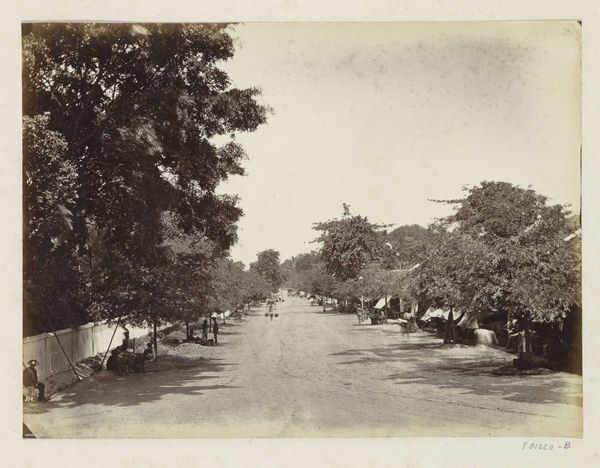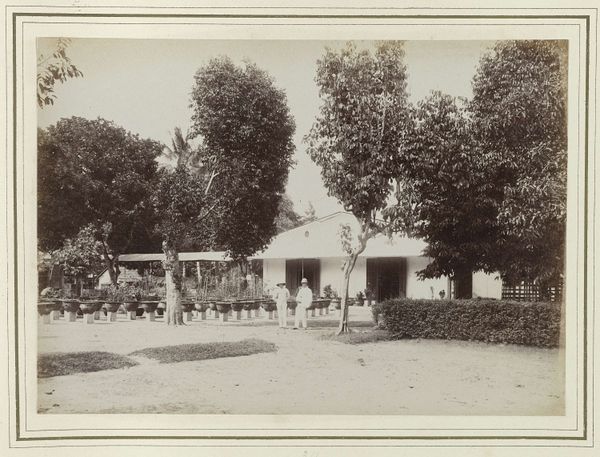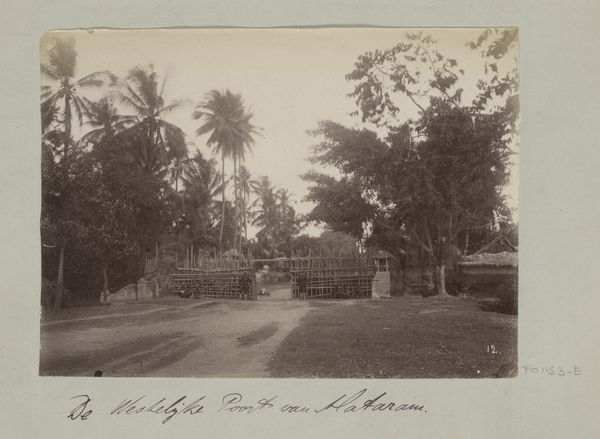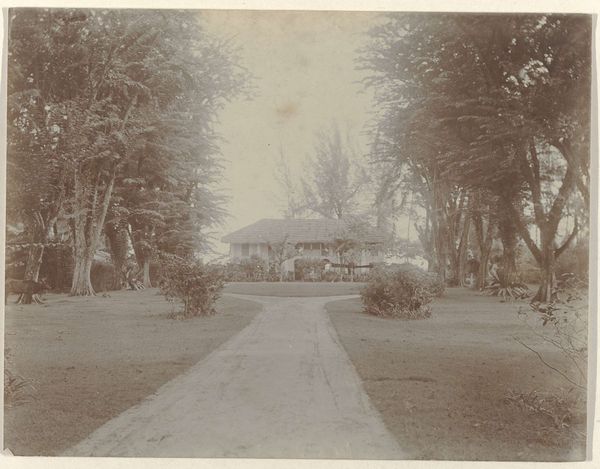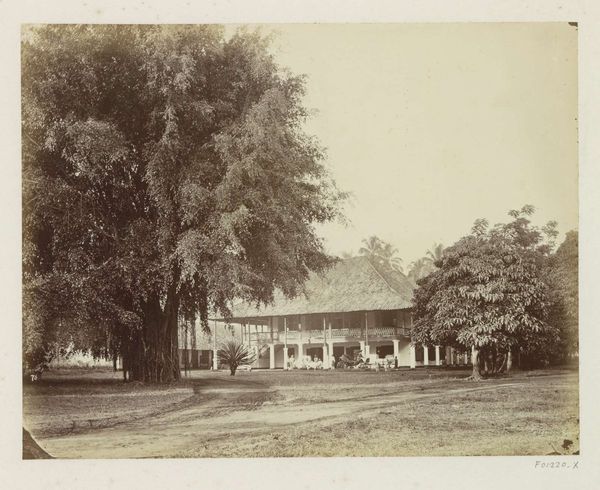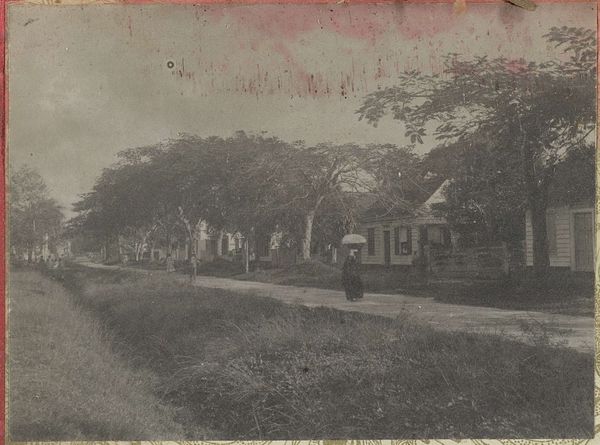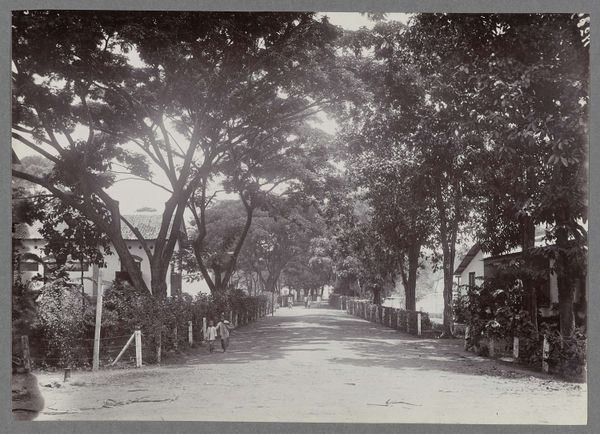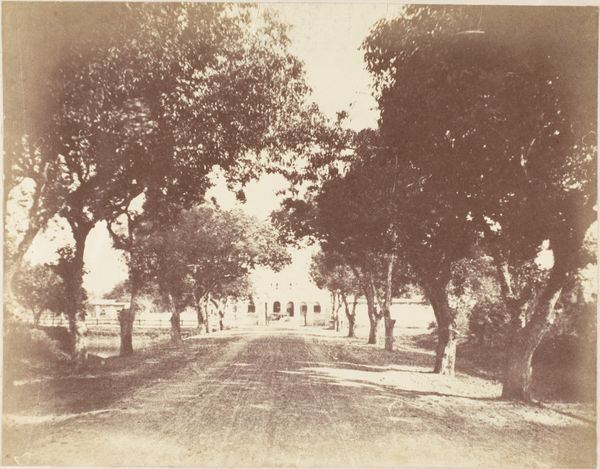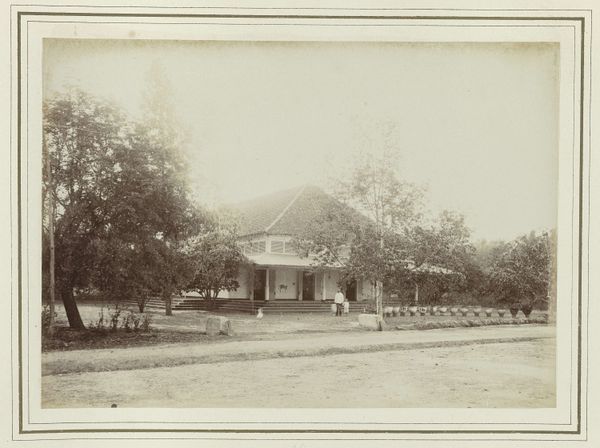
Het huis van Paul Sandel in Tandjong Poera, Langkat Sumatra c. 1900
0:00
0:00
print, photography, albumen-print
# print
#
landscape
#
photography
#
orientalism
#
albumen-print
Dimensions: height 228 mm, width 321 mm
Copyright: Rijks Museum: Open Domain
Editor: Here we have an albumen print from around 1900, titled "The house of Paul Sandel in Tandjong Poera, Langkat Sumatra" by Heinrich Ernst & Co, currently held in the Rijksmuseum. It depicts a serene plantation scene. It's a lovely landscape, but there's this palpable sense of colonial privilege... What can you tell me about how this image fits into the art of its time? Curator: It's astute to sense the colonial power dynamics at play here. Images like this one by Heinrich Ernst & Co. weren't merely documenting landscapes; they were actively constructing and reinforcing colonial narratives. This image aestheticizes the colonial presence, presenting a romanticized vision of life on a plantation in Sumatra. How does the presence of people in the image strike you? Editor: They seem rather detached from the environment. The people appear quite small in scale and a bit staged. It’s a tranquil scene but I can’t ignore the backdrop. Curator: Exactly. This detachment, this carefully constructed distance, speaks volumes about the socio-political context. These photographs were often commissioned by colonizers for circulation back in Europe, bolstering perceptions of control and dominance. It’s important to consider what these images omit; the labor, the exploitation, the social disruptions caused by colonialism. The 'orientalism' in landscape form. How do you feel the institution, Rijksmuseum, today might be dealing with its colonial photography collection? Editor: That is a great point. I'd imagine they are actively working to contextualize these images with information about the historical context, including the perspectives of the colonized people. A decolonized lens, in other words, for these pieces. Curator: Precisely. By critically examining these images, acknowledging the power structures inherent in their creation and circulation, we can begin to understand the complex relationship between art, history, and social justice. It has been enlightening talking through it together. Editor: I agree, seeing how historical forces can directly impact artistic depictions offers so much food for thought. I’ll have a fresh perspective at my next museum visit!
Comments
No comments
Be the first to comment and join the conversation on the ultimate creative platform.
